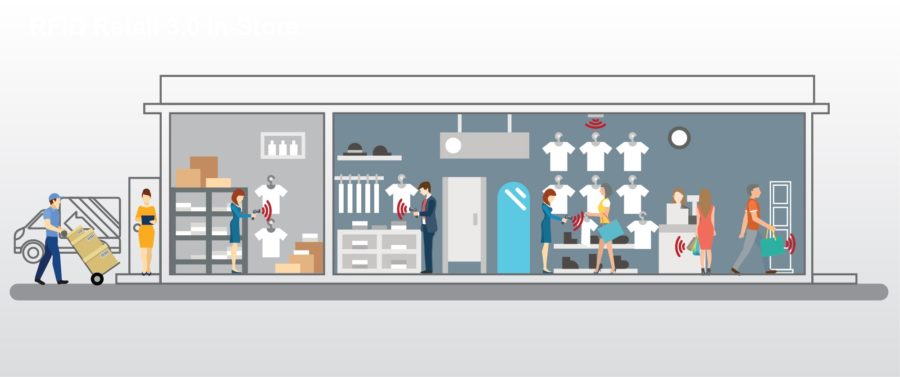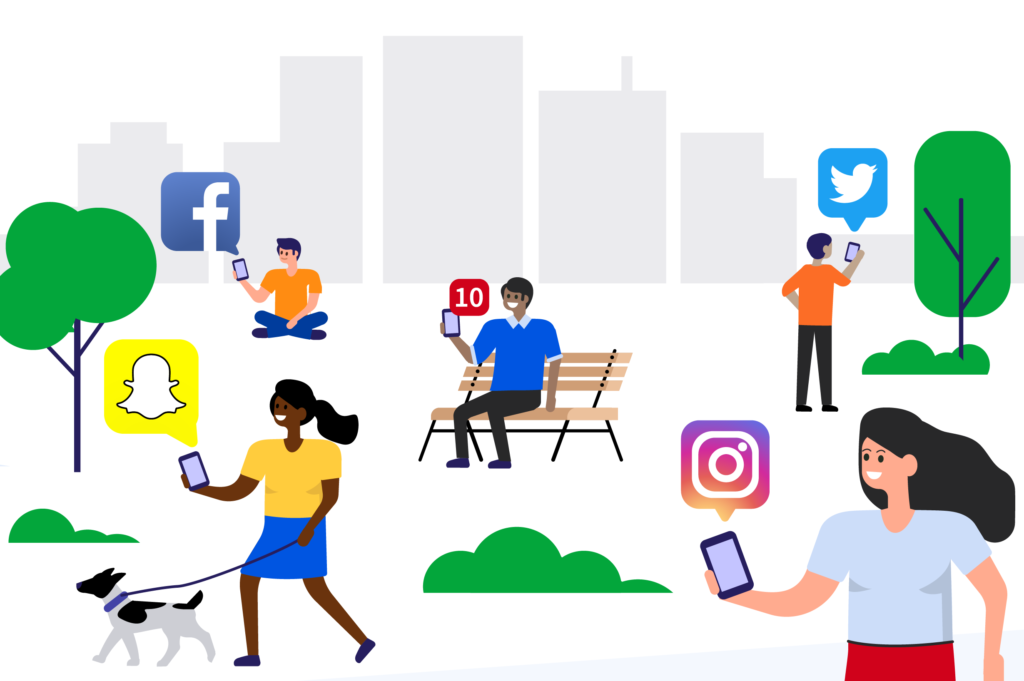Radio-frequency identification (RFID) is an application of IoT which is mostly used in retail. By making use of RFID tags, the retailers can identify where a product is through the tracking system (Lam and Chan, 2018).
RFID has several benefits for the retailer and customer. Firstly, there is an accuracy up to 98% of inventory levels. Typically, an inventory count is done manually, which is very time-consuming. Moreover, as there is a high accuracy, the replenishment orders can be set accordingly with higher precision. Not only can workers in the store know how many items they have at the location, they can also be notified when certain sizes are missing on the floor, therefore not missing out on these sales (Wood and Roller, 2019). Additionally, RFID can be used for analytical purposes. By plotting how people and products navigate through the store, relevant conclusions about product categories and peak times can be made. Next to on the floor, RFID is also used in the fitting rooms, as the mirror can track which item the customer is trying on by geo-locating RFID tags. The mirror can show other available colours, product information or even available complementary products (Bianchi, 2017).
As a last step, RFID can also be used for self-scan checkouts. An even more advanced example of technology use in retail is the Amazon go store with their so-called ‘just walk out’ experience. Customers enter the store by using the Amazon Go app and leave the store without a checkout. It uses the same technology in driverless cars, namely sensor fusion, computer vision and deep learning algorithms. These technologies track which products are taken and when leaving, the customer is charged through their Amazon account (Tillman, 2020).
Do you think this type of store is the future?
References
Bianchi, J. (2017). 5 Examples of Innovative Uses for RFID Technology in Retail. Retrieved 8 October 2020, from https://www.shopify.com/retail/5-examples-of-innovative-uses-for-rfid-technology-in-retail
Lam, T., & Chan, R. (2018). Ten digital trends shaping the future of retail [Ebook]. The Fung Business Intelligence. Retrieved from https://www.fungscholars.org/wp-content/uploads/2019/01/Ten_digital_trends_shaping_the_future_of_retail.pdf
Tillman, M. (2020). What is Amazon Go, where is it, and how does it work?. Retrieved 8 October 2020, from https://www.pocket-lint.com/phones/news/amazon/139650-what-is-amazon-go-where-is-it-and-how-does-it-work
Wood, J., & Roller, B. (2019). 7 Powerful Examples of how RFID Technology can be Used in Retail. Retrieved 8 October 2020, from https://medium.com/qash/7-powerful-examples-of-how-rfid-technology-can-be-used-in-retail-e3f5a711eb85


